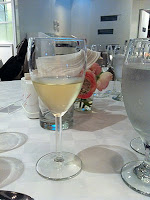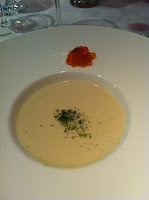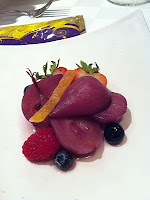4 scoring system in Wine World: Robert Parker Scale; Wine Spectator Score; Decanter Star and UC Davis System, the most famous of all would be the renowned wine critic / lawyer Mr. Robert Parker's RP scale.
Robert Parker 100 point scale system
It is based on the 100 point scale system in which is branded as the key reference to pricing trend of wine futures, impacting the wine stock exchange market
Robert Parker's rating system employs a 50-100 point quality scale (Parker Points®). It is the belief that the various twenty (20) point rating systems do not provide enough flexibility and often result in compressed and inflated wine ratings. He prefers to underestimate the wine's quality than to overestimate it. The numerical ratings are utilized only to enhance and complement the thorough tasting notes, communicating his judgments to us.
96 - 100 An extraordinary wine of profound and complex character displaying all the attributes expected of a classic wine of its variety. Wines of this caliber are worth a special effort to find, purchase, and consume.90 - 95 An outstanding wine of exceptional complexity and character. In short, these are terrific wines.
80 – 89 A
70 – 79 An average wine with little distinction except that it is a soundly made. In essence, a straightforward, innocuous wine.
60 – 69 A below average wine containing noticeable deficiencies, such as excessive acidity and/or tannin, an absence of flavor, or possibly dirty aromas or flavors.
50 – 59 A wine deemed to be unacceptable.
Wine Spectator's 100 point scale
The Wine Spectator is a longtime advocate of the popular 100-point rating scale. This is how the magazine explains its scoring system: 'Wines are always tasted blind. Bottles are bagged and coded. Tasters are told only the general type of wine (varietal or region) and vintage. Price is not taken into account.' The magazine says its ratings are based on 'potential quality, on how good the wines will be when they are at their peaks'.
95-100 Classic, a great wine.
90-94 Outstanding, a wine of superior character and style.
80-89 Good to very good, a wine with special qualities.
70-79 Average, a drinkable wine that may have minor flaws.
60-69 Below average, drinkable but not recommended.
50-59 Poor, undrinkable, not recommended.All official Wine Spectator tastings are held in private rooms, under optimum conditions. They will be blind tasting, non blind tasting and barrel tasting to confirm impressions.
Ref: http://www.winespectator.com/display/show?id=about-our-tastings
Decanter 5 star system
Decanter’s admirable 5-star system. Even Hugh Johnson is praising the system in his column. Decanter magazine, an influential wine periodical in England, has a dedicated readership worldwide. This publication employs a 1- to 5-star rating system popularized by Michael Broadbent in his Great Vintage Wine Book. Decanter tastings are conducted blind and participating panelists change with each tasting.
5 stars Outstanding quality, virtually perfect example
4 stars Highly recommended
3 stars Recommended
2 stars Quite good
1 star Acceptable
Ref: http://www.wine-searcher.com/wine-scores.lml
UC Davis 20 Point Scale System
The Davis system was developed by Dr. Maynard A. Amerine, Professor of Enology at the University of California at Davis, and his staff in 1959 as a method of rating the large number of experimental wines that were being produced at the university.
The Davis system is quite straightforward. It assigns a certain number of points to each of ten categories which are then totaled to obtain the overall rating score for a given wine.
17 - 20 Wines of outstanding characteristics having no defects
13 - 16 Standard wines with neither oustanding character or defect
9 - 12 Wines of commercial acceptability with noticeable defects
5 - 8 Wines below commercial acceptability
1 - 5 Completely spoiled wines
Appearance (2 points) - The wine is given 2 points if it is brilliant, with no dullness, murkiness, or particles of sediment.
Color (2 points) - Acceptable colors for white wines are varying shades of yellow, gold, straw. Flaws are any amber tones, indicating oxidation.
Aroma and Bouquet (4 points). Aroma is the sensory impression arising from the mouth. Negative factors are odors that can be described as alcoholic, excessively woody, moldy or corked.
Volatile Acidity (2 points) - This is the term for Vinegary-ascensence. Does the wine smell of vinegar? If not, it rates 2 points. A slight vinegar smell will rate 1 point. If it smells of vinegar it rates 0.
Total Acidity (2 points) - Felt in the mouth, around the edges of the tongue, it is wine's refreshing zing. If low, the wine is flat, flabby or soapy. It can be too high with unpleasant sharpness.
Sweetness/sugar (1 point) - Sugar and total acidity go together. Overly set for the wine's type is a fault, as is overly dry.
Body (1 point) - This is the wine's viscous nature identified as mouth-feel, also the binges, or alcoholic strength.
Flavor (1 points) - The flavor should correspond with the bouquet and aroma, being clean, fruity, full or balanced. It should not be metallic, steamy, or alien in character.
Astringency (2 points) - Tannins give a wine astringency (or bitterness), and so does the wood in which wine is aged. Younger wines will be rougher than older wines. A young wine is not discounted for a natural tannin.
General Quality (2 points) - The only category for subjective appraisal, adjusting the score on the basis of the wine's total performance.
Ref: http://finias.com/wine/ucd_scoring.htm
Where's the last point? -- Guest it's for compensation if needed...
If you start in doubt with the scores... you are...Absolutely right!
There is no such thing called Bible of wine score. Even prestigeous as what Robert Parker gives you, it is from his fundamental preference of wine and from his sense to the wine. I would take more reference on his view about how long the wine will get to maturity, is it ready to drink and its potential , rather than the taste.
To give you an example, by this month's CRU magazine, it is about Sake that 6 sommelier or wine experts are tasting. Compare the tasting notes of each to the same wine, while one can taste the seaweed and nuts, another will have light citrus fruit and dry fruits, how can such a contrast appear at once? Hence I think you can trust your own taste buds and preference to your favourite wine. RP 100 pts may only be your 80 pts. From there you may find your favourite at reasonable price.
Now, pray to God that your preference is not like RP, otherwise you have to be as rich to get your favourite.











